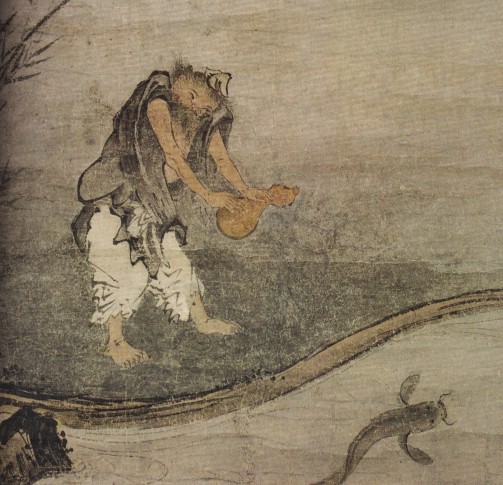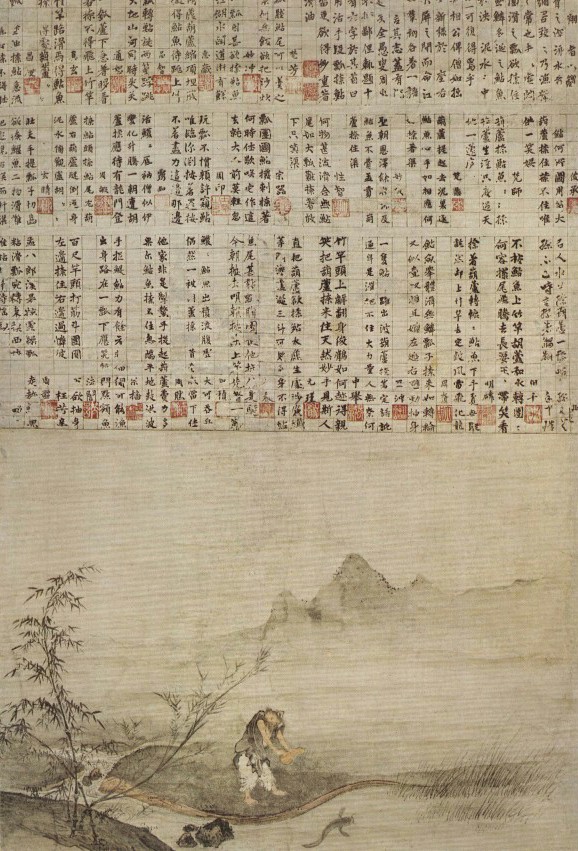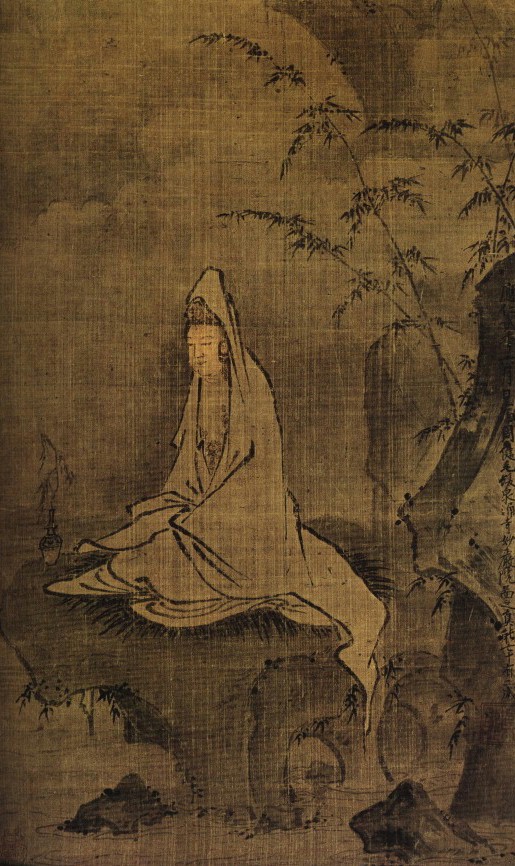
As a guide to your first experience of these, consider them in terms of the following issues:
These pictures are often considered to have a particular affinity with Zen. In some cases that affinity is easy to trace thematically. The kôan about a catfish and a gourd which I mentioned in class, becomes the theme of the painting below, by Josetsu***:


A view of the full painting gives you a sense of the visual relation of writing to painting in much of the art of this period. A rich experience of the painting includes a consideration of the texts and, of course, what they say, but even without quoting their content here, we can perhaps understand to at least some degree, the sense of intellectual depth which presumes that a viewing of the painting will be refracted through the individual texts and the names of their writers (note how the texts are written by different individuals, and all signed). It is important, moreover, that most of the texts are poems, in Chinese.
A different sense of the interdependence of calligraphy and painting in Muromachi culture can be seen in the painting below. Again thematically Buddhism is explicit. (Here we have a painting of the bodhisattva Kannon.) On the technical level, though, consider the lines used to define Kannon's robe. They trace the kinetic process whereby the image was created in their variations in width and their fluency crossing the highly absorbent mulberry paper (or silk?) surface.
